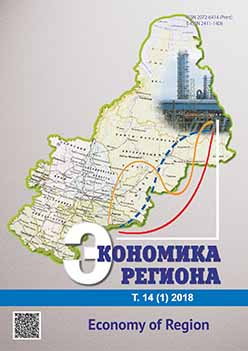Социально-культурные факторы дожития лиц мужского и женского пола в экономически активном возрасте: региональный анализ
Sociocultural Factors of Survival of Males and Females in Economically Active Age: a Regional Analysis
Author(s): Yevgeniya Khasanovna Tukhtarova, Aleksandr Ivanovich Kuzmin, Natalya Pavlovna NeklyudovaSubject(s): Economy, Geography, Regional studies
Published by: Институт экономики Уральского отделения Российской академии наук
Keywords: census of population; generation; cohort; economically active age; mortality tables; the probability of survival; econometric models; demographic transition; culture of self-preservation; individual v
Summary/Abstract: The period, when a person starts and completes his or her professional carrier and labour participation, in general, coincides with the age when the self-preservation behaviour develops. It is a time when a person aims for a healthy and safe lifestyle. During this period, an individual assumes the main standards, values of the self-preservation behaviour inherent in an ethnic, social and cultural macro-environment. To research the sociocultural factors of survival, we applied econometric modelling to demographic processes using the discrete and probabilistic indicators of the mortality tables of male and female in economically active age. The econometric model included the elements of spatiotemporal characteristics of territories. These characteristics are interrelated with the indicators of survival probability and the indicator of average life expectancy in the regions of Russia. We choose the major sociocultural factors by the correlation ratio of indicators and their sensitivity. The econometric analysis has revealed a high degree of sensitivity of a territorial variation of demographic and sociocultural factors in the regions of Russia, including a gender aspect. The most significant socio-economic factors, which determine the self-preservation behaviour of males, are the following: 1) the size of Gross Regional Product per capita; 2) quality of health infrastructure; 3) fixed investments; 4) population with monetary income under the subsistence minimum (share coefficient of income differentials). The female have the same hierarchy of socio-economic factors, except for the sensitivity of variables to the regional differentiation of signs. The household poverty factor has little significance for the women and it is the main difference between male and female. The built model has shown the predictive importance in the assessment of the above-mentioned factors in short and medium-term prospects.
Journal: Экономика региона
- Issue Year: 14/2018
- Issue No: 1
- Page Range: 109-122
- Page Count: 13
- Language: Russian

